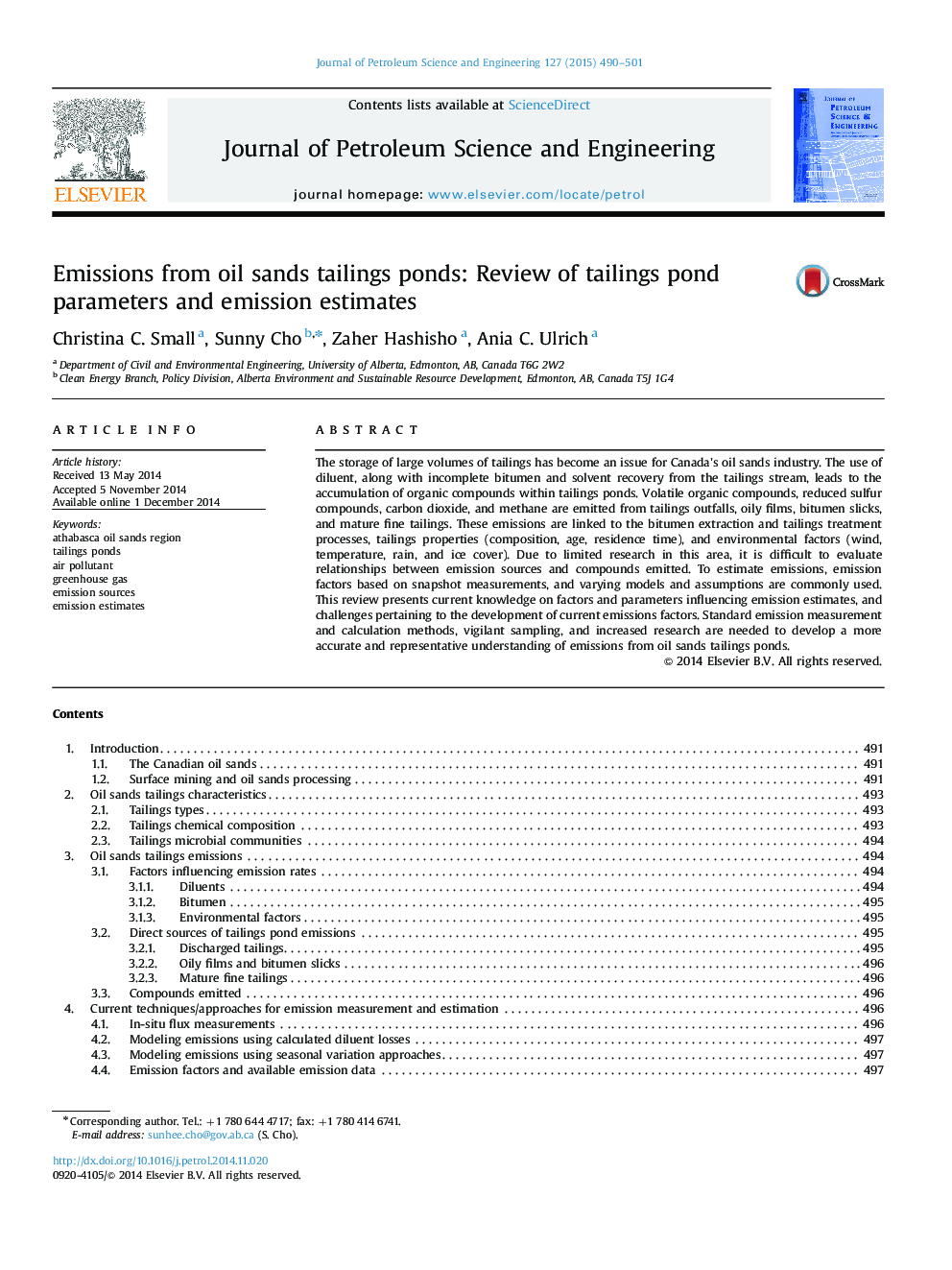| Article ID | Journal | Published Year | Pages | File Type |
|---|---|---|---|---|
| 1754895 | Journal of Petroleum Science and Engineering | 2015 | 12 Pages |
•Oil sands tailings are heterogeneous sources of VOC, CO2, CH4, and RSC emissions.•Knowledge gap and research needs to improve emissions measurement were identified.•Understanding the impact of ice melt and microbial activity on emissions is needed.•Methods that capture the spatial and temporal variation of emissions are needed.
The storage of large volumes of tailings has become an issue for Canada׳s oil sands industry. The use of diluent, along with incomplete bitumen and solvent recovery from the tailings stream, leads to the accumulation of organic compounds within tailings ponds. Volatile organic compounds, reduced sulfur compounds, carbon dioxide, and methane are emitted from tailings outfalls, oily films, bitumen slicks, and mature fine tailings. These emissions are linked to the bitumen extraction and tailings treatment processes, tailings properties (composition, age, residence time), and environmental factors (wind, temperature, rain, and ice cover). Due to limited research in this area, it is difficult to evaluate relationships between emission sources and compounds emitted. To estimate emissions, emission factors based on snapshot measurements, and varying models and assumptions are commonly used. This review presents current knowledge on factors and parameters influencing emission estimates, and challenges pertaining to the development of current emissions factors. Standard emission measurement and calculation methods, vigilant sampling, and increased research are needed to develop a more accurate and representative understanding of emissions from oil sands tailings ponds.
